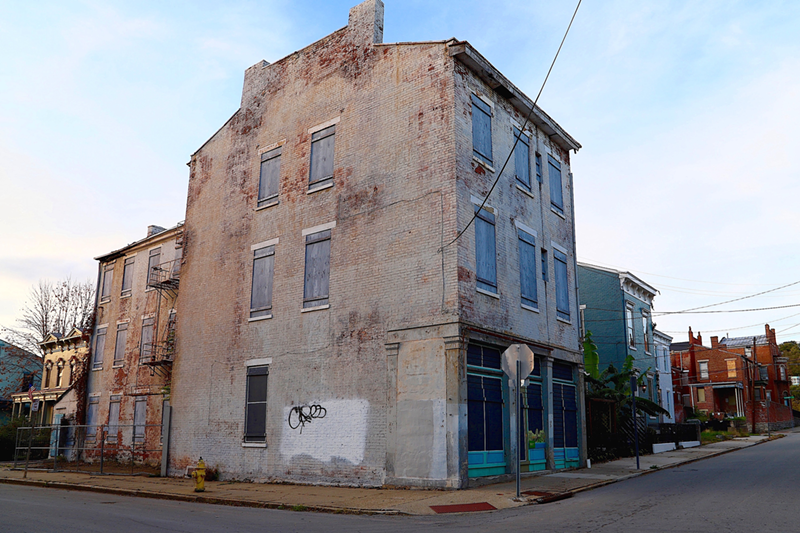Cincinnati's The Port released a finalized version of a long-awaited housing study for the West End as the neighborhood prepares for FC Cincinnati's coming 26,000-seat West End Major League Soccer stadium.
CityBeat reported on takeaways from the study by APD Urban Planning and Management last month. Among them: Some 44 percent of residents in the West End are at significant risk of displacement, researchers suggest.
The report, which uses Census data, a parcel-by-parcel survey of the neighborhood's housing stock and a separate qualitative data gathering effort by Design Impact, shows that more than a quarter of the West End's 6,650 residents are "extremely threatened" by the prospect of displacement due to low or fixed incomes. Another 17 percent are threatened to some lesser degree.
According to surveys, more than 60 percent of residents in the West End have been there more than six years and 80 percent of residents want to stay there.
"Overall, this new study shows that, if the West End is going to retain its cultural legacy as a thriving center of economic and ethnic diversity, there is clear need to keep people involved and continued community engagement, and that requires all stake-holders at the table," Seven Hills Neighborhood Housing Executive Director Alexis Kidd-Zaffer said. "That intentional outreach to residents will go a long way in making sure all are engaged in the work ahead.”
Roughly 87 percent of the neighborhood's residents are renters, Census data reveals. Subsidized housing — either in the form of housing projects or landlords accepting housing choice vouchers — makes up about 1,700 units of the community's housing, making its residents somewhat less vulnerable to displacement than market-rate housing.
APD's finished study provides nine recommendations. Among them: build housing for those making between zero and 30 percent of area median income (about $18,000 a year) and those making more than $50,000 a year. The study also suggests which parts of the neighborhood could best handle new development. APD assessed vacant parcels in the West End and found four areas with lots of vacant land in which new development could occur with minimal direct displacement. If those developments included affordable housing, that could help existing residents struggling to find or keep homes in the neighborhood.
"We got a lot of information from Design Impact, we got existing conditions data, we used Census data," APD Chief Operations Officer Bridget Wiles said at an Aug. 21 presentation for residents about the report. "We took all that data and came up with actual areas where you could price-appropriate housing that would result in the least amount of displacement possible. We think that's going to be very valuable, and once we move into implementation, those things are going to be very important."
The Port is also stressing the need for higher-income housing development to soak up demand from families making more than area median income.
“The West End Housing Study findings underscore the concerns in the West End, which include an urgency to protect low- and moderate-income residents from displacement; stabilize existing housing; proactively create opportunity for economic mobility; and attract new capital investment and financing sources into the neighborhood from mission-aligned community finance institutions and developers," Port Executive Director Laura Brunner said in a statement. "At The Port, we’ve been putting these principles to work in neighborhoods like Evanston and Bond Hill and have already initiated similar efforts to address these concerns in the West End.”
Among efforts the Port is making currently:
• Stabilization of six single-family homes for sale as market rate housing
• Renovation with Seven Hills of four buildings providing 18 units of housing affordable to families making less than $65,000 a year
• Work to gather enough property to allow Seven Hills to undertake a Low-Income Housing Tax Credits project that would create up to 50 units of affordable housing for those making $40,000 or less a year.
In the meantime, Seven Hills is working to mitigate immediate needs from residents, including providing an eviction prevention program and a fund for home rehabilitation for those facing building code issues.
Edit: An earlier version of this article stated that Design Impact performed quantitative research as part of the West End housing study. It actually performed qualitative research for that effort.






